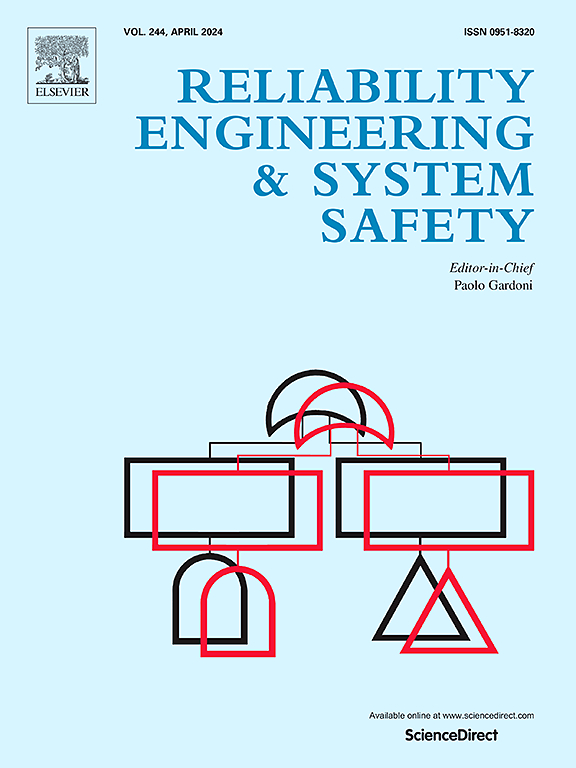Safety Integrity Level (SIL) evaluation of safety instrumented systems considering competing failure modes and subsystem priorities
IF 9.4
1区 工程技术
Q1 ENGINEERING, INDUSTRIAL
引用次数: 0
Abstract
Safety Integrity Level (SIL) is a crucial measure of the safety performance of Safety Instrumented Systems (SISs), reflecting their ability to reduce risk. However, SIL analysis has often overlooked the impact of competing failure modes and subsystem priorities within SISs. This paper introduces a novel probabilistic model for evaluating the SIL of safety functions that incorporates these critical aspects. The model calculates the time-dependent Probability of (dangerous) Failure on Demand (PFD) and Probability of Failing Safely (PFS) at the component, subsystem, and system levels. The average PFD (PFDavg) and SIL are calculated considering both planned and unplanned proof tests. The proposed model is validated through Monte Carlo simulations and applied to a safety system designed to protect a process vessel from high-pressure hazards. A comparative analysis with existing models demonstrates that competing failure modes and subsystem priorities significantly influence PFD, PFS, PFDavg, and consequently SIL, especially in systems with longer proof test intervals and higher Safe Failure Fractions (SFFs).
考虑竞争失效模式和子系统优先级的安全仪表系统的安全完整性水平(SIL)评估
安全完整性水平(SIL)是衡量安全仪表系统(SISs)安全性能的重要指标,反映了其降低风险的能力。然而,SIL分析经常忽略了iss中竞争失效模式和子系统优先级的影响。本文介绍了一种新的概率模型,用于评估安全功能的SIL,其中包含了这些关键方面。该模型在组件、子系统和系统级别计算随需应变(危险)故障的时间相关概率(PFD)和安全故障概率(PFS)。平均PFD (PFDavg)和SIL的计算考虑了计划和非计划的证明测试。通过蒙特卡罗模拟验证了所提出的模型,并将其应用于设计用于保护工艺容器免受高压危害的安全系统中。与现有模型的对比分析表明,竞争失效模式和子系统优先级显著影响PFD、PFS、PFDavg,从而影响SIL,特别是在具有较长验证测试间隔和较高安全失效分数(SFFs)的系统中。
本文章由计算机程序翻译,如有差异,请以英文原文为准。
求助全文
约1分钟内获得全文
求助全文
来源期刊

Reliability Engineering & System Safety
管理科学-工程:工业
CiteScore
15.20
自引率
39.50%
发文量
621
审稿时长
67 days
期刊介绍:
Elsevier publishes Reliability Engineering & System Safety in association with the European Safety and Reliability Association and the Safety Engineering and Risk Analysis Division. The international journal is devoted to developing and applying methods to enhance the safety and reliability of complex technological systems, like nuclear power plants, chemical plants, hazardous waste facilities, space systems, offshore and maritime systems, transportation systems, constructed infrastructure, and manufacturing plants. The journal normally publishes only articles that involve the analysis of substantive problems related to the reliability of complex systems or present techniques and/or theoretical results that have a discernable relationship to the solution of such problems. An important aim is to balance academic material and practical applications.
 求助内容:
求助内容: 应助结果提醒方式:
应助结果提醒方式:


